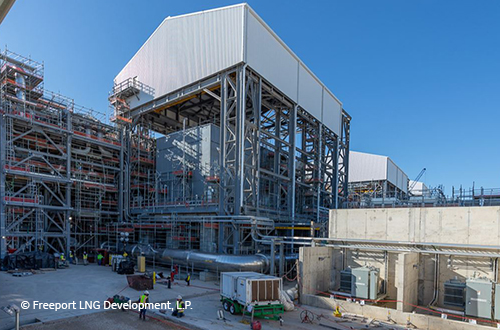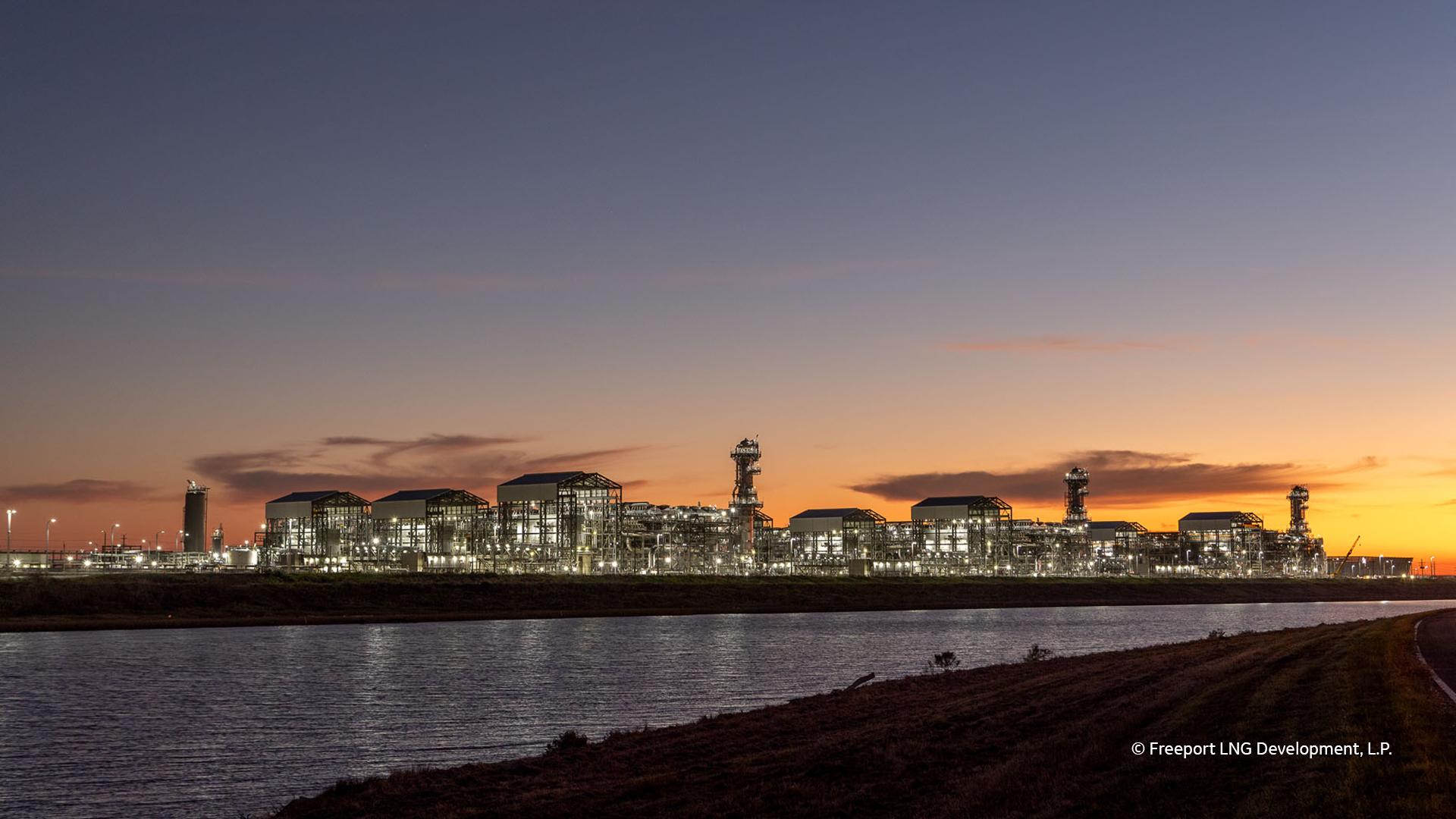September 21, 2022
Freeport LNG, world largest all-electric liquefaction plant – Quintana Island, Texas, US
Freeport LNG, founded in 2002 and headquartered in Houston, is the world’s seventh largest LNG export company and the second largest in the United States. The company is focused on providing its customers with low carbon intensity LNG.
In 2014, Freeport LNG received an authorization to construct a world-class natural gas liquefaction and liquefied natural gas export facility, designed to have a capacity to export 15.3 million metric tons per annum (MTPA), equivalent to approximately 2.2 billion standard cubic feet (Bscf) of gas per day.
As part of this project, GE Power Conversion was awarded a contract to provide Freeport LNG with all-electric drivers for the three trains of the liquefaction facility’s (LQF) refrigerant compressors.
With 675 MW total electric power installed, Freeport LNG is the world’s largest all-electric plant built to date.
Challenge
The Freeport LNG development project is bound by strict local environmental rules including emission standards. Electric power is available from the local grid removing the need to generate electricity, this led the company to select a full-electric technology over conventional steam or gas turbines solutions for the main refrigeration process.
Solution
The three liquefaction trains each comprise two entirely electrically driven refrigeration cycles. Three 75 MW complete electrical systems were then needed to drive the low-pressure mixed refrigerant (MR) compressor, the medium pressure and high-pressure MR compressors combined as well as the propane compressor.
Scope of supply
Each of the nine systems provided by GE Power Conversion includes:

- A 2-pole synchronous motor –75 MW – 3,000 rpm. This is the largest electric motor ever supplied for an LNG facility.
- A 96 MVA Step Down transformer consisting of 1 primary and 3 secondary 138 kV
- An e-house with all its utilities (HVAC, lighting, fire detection, etc.) accommodating:
- 1 Variable Speed Drive (VSD) based on LCI technology
- 1 low voltage distribution center (MCC) 480 VAC
- 1 low voltage distribution center (PRC/LVD) 120 VAC, 125 VDC
- 1 UPS AC and UPS DC power supply system
- 1 harmonic filter composed of 4 ranks with its associated 13.8 kV switchgear
Extensive effort has been applied to modelling, understanding and analyzing torsional issues. The three compressor strings for Train 1 underwent complete full load and full speed string tests, with all auxiliaries, including string shaft torsional vibrations measurement.
Benefits
GE Power Conversion’s e-LNG drivers contribute to reduced emissions, shorter restarts, increased operating flexibility and improved efficiency and production.
- Reduction of site combustion emissions by 90%* (2), resulting in more savings on carbon taxes.
- Net production increase by over 6.5%* (2) – The use of electric power allows all the natural gas entering the facility to be turned into LNG.
- High flexibility, resulting in production increase – Thanks to a nearly constant amount of power throughout the year and fewer outage days, the eLNG plant can produce the equivalent of 10 to 15 days more of LNG per year (2.7% to 4.1 %)* (2).
- Help achieve reduced performance loss due to high temperatures – the production loss for a given installed specific power is estimated to be less than 2% of production per 5°C ambient temperature increase* (1).
- For the Freeport LNG project, GE Power Conversion’s electrical equipment is estimated to run 6 years before minor maintenance and 12 years before major one*.
- Maintenance cost reduction – the maintenance of an electric system is estimated to cost approximately 30% less than for a turbine* (1).
- Operational flexibility – Freeport LNG’s concept of three motors per train also separates control of two refrigeration loop compressors from each other, which simplifies overall liquefaction operation control. The propane refrigeration compressor rotating speed can be adjusted without necessarily affecting the MR compressors, since they are not coupled to the same driver.
* Data may vary depending on manufacturer, site particular conditions, and market conditions.
Looking at the future
The Freeport LNG facility commenced commercial export operations in December 2019 and reached full commercial operation when Train 3 completed startup on 1 May 2020. A fourth liquefaction train has received all regulatory approvals and a final decision should be made in early 2023, with operations expected to start in 2026 or 2027. This additional train is expected to increase the plant’s total liquefaction capacity to approximately 20.4 MTPA. Train 4 will also make use of all-electric drive technology.
Sources
(1) Vara, Roberto Ruiperez, and Mohammad Pouran. “Electric LNG.” (LNG Industry), no. April 2016 (n.d.): 37-40
(2) Roberto Ruiperez Vara – Freeport LNG, Lance Goodwin – Freeport LNG, William P. Schmidt – Air Products and Chemicals Inc., Robert P. Saunderson– Air Products and Chemicals Inc. “Freeport LNG’s Lessons Learned from All-Electric LNG Liquefaction Trains Start Ups” – Gastech Technical Conference | 21-23 September 2021

